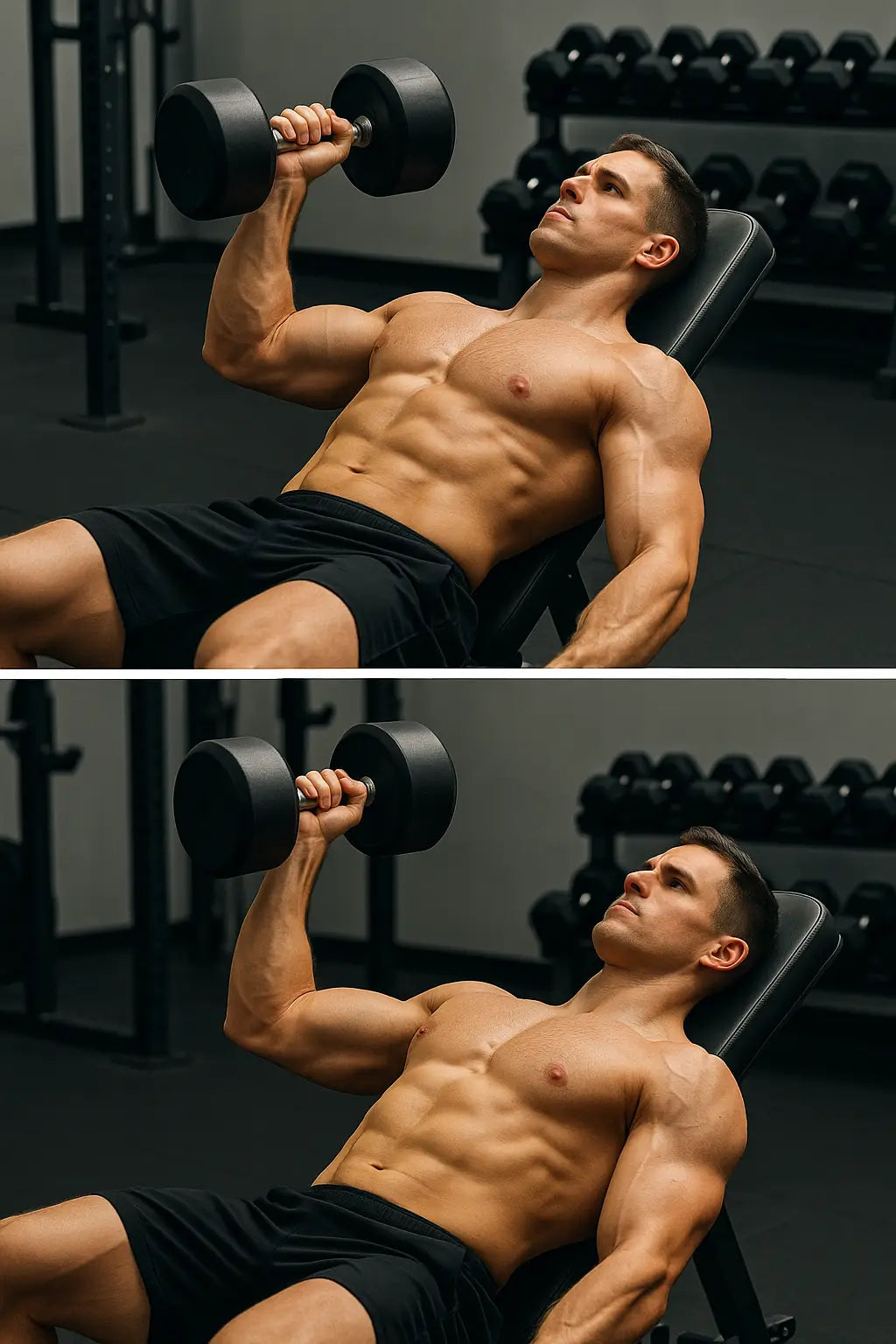
Flat vs Incline Dumbbell Bench Press: Which Builds More Muscle?
Share
Struggling With a Flat Chest? Here’s Why You Need Both Flat and Incline Press
Chest training is one of the most debated topics in the fitness world. Some argue that the flat dumbbell bench press is the ultimate muscle builder, while others claim that the incline dumbbell bench press is the secret to a fuller, more aesthetic chest. The truth? Both exercises have unique benefits, and understanding when and how to use them will maximize your muscle growth.
In this in-depth guide, we’ll break down everything you need to know about flat vs incline dumbbell bench press, including form, benefits, mistakes to avoid, and how to incorporate both into your routine. By the end, you’ll know which movement to prioritize — and why you should really be doing both.
Why the Dumbbell Bench Press Matters for Chest Growth
When it comes to chest training, the dumbbell bench press is a gold standard. Unlike barbells, dumbbells allow:
-
Greater range of motion → Dumbbells let you lower deeper and press higher, leading to better chest activation.
-
Balanced muscle development → Each arm works independently, preventing one side from dominating.
-
Joint-friendly movement → The neutral and adjustable hand positions are easier on the shoulders.
-
Safer home workouts → If you fail a rep, you can drop dumbbells safely to the side without a spotter.
Because of these benefits, the dumbbell bench press (both flat and incline) is essential for building a strong, aesthetic upper body.
Flat Dumbbell Bench Press – The Classic Mass Builder
Muscles Worked
-
Primary: Middle chest (pectoralis major, sternal head)
-
Secondary: Triceps, front deltoids
Benefits
-
Maximizes pressing power – The flat press recruits the most overall chest muscle fibers.
-
Foundational strength – Builds baseline pushing strength for both chest and triceps.
-
Beginner-friendly – Easier learning curve than incline due to a more natural angle.
-
Carries over to other lifts – Builds strength that helps with push-ups, barbell bench, and overhead pressing.
Tips for Proper Form
-
Keep elbows at 30–45° from your body (avoid flaring).
-
Lower dumbbells to chest level in 2–3 seconds.
-
Slight arch in lower back, but glutes and shoulder blades stay planted.
-
Perform 3–4 sets of 8–12 reps for hypertrophy.
Incline Dumbbell Bench Press – The Upper Chest Shaper
Muscles Worked
-
Primary: Upper chest (pectoralis major, clavicular head)
-
Secondary: Front delts, triceps
Benefits
-
Targets the upper chest – Builds the “chest shelf” that gives a fuller look.
-
Improves aesthetics – Prevents chest from looking bottom-heavy.
-
Adds variety – Different angle prevents plateaus.
-
Enhances shoulder stability – The incline position engages shoulders differently, supporting overall balance.
Tips for Proper Form
-
Set bench to 30–45°. More than 45° turns it into a shoulder press.
-
Lower dumbbells slowly, keeping wrists stacked above elbows.
-
Press upward in a controlled arc — don’t bang dumbbells at the top.
-
Use lighter weights than your flat press.
Flat vs Incline Dumbbell Bench Press – Key Differences
| Feature | Flat Dumbbell Bench Press | Incline Dumbbell Bench Press |
|---|---|---|
| Main Target | Middle chest (sternal head) | Upper chest (clavicular head) |
| Secondary Muscles | Triceps, front delts | Front delts, triceps |
| Strength Potential | Higher – allows heavier weights | Lower – typically 10–20% lighter load |
| Hypertrophy Effect | Builds overall chest mass | Enhances upper chest shape & fullness |
| Learning Curve | Easier for beginners | Slightly harder, more shoulder stability |
| Equipment Needed | Flat bench | Adjustable incline bench |
Verdict: Both are essential — flat builds raw mass, incline shapes a balanced chest.
Why You Need an Adjustable Bench for Both
The biggest limitation in home gyms? Equipment. A flat bench only allows flat pressing, while an adjustable bench unlocks incline, decline, and more.
The Adjustable Bench Press - Foldable Dumbbell Stool for Home Gym – Fortira Fitness solves this problem:
-
Adjustable angles (flat, incline, decline) to train your entire chest.
-
Space-saving design — foldable and easy to store.
-
Durability — sturdy frame supports intense pressing.
If you want to compare flat vs incline dumbbell bench press at home, an adjustable bench is a must.
Programming Tips – How to Combine Both for Muscle Growth
-
Option 1 – Upper Chest Priority
Start with incline dumbbell bench press (3–4 sets of 8–10), then finish with flat dumbbell press (3–4 sets of 8–12). -
Option 2 – Mass & Strength Priority
Start with flat dumbbell bench press (3–4 sets of 6–8 heavy reps), then incline dumbbell press for 3–4 sets of 10–12 for volume. -
Option 3 – Alternating Workouts
Week 1: Start with flat press
Week 2: Start with incline press
This rotation keeps both lifts progressing and ensures balanced chest development.
Common Mistakes in Both Presses
-
Flat Bench Mistakes
-
Flaring elbows → shoulder strain
-
Bouncing dumbbells off chest
-
Lifting hips off the bench
-
-
Incline Bench Mistakes
-
Setting bench too high → becomes a shoulder press
-
Going too heavy too soon → poor form
-
Shrugging shoulders → reduces chest activation
-
Using a stable adjustable bench ensures better posture and reduces risk.
Conclusion – Which Builds More Muscle?
So, flat vs incline dumbbell bench press: which is better? The truth is both.
-
Flat press builds overall mass and strength.
-
Incline press targets the upper chest for balance and aesthetics.
If you want maximum muscle growth, you need both in your program. With an adjustable bench like the Adjustable Bench Press - Foldable Dumbbell Stool for Home Gym – Fortira Fitness, you can seamlessly perform both exercises and unlock complete chest development — all from home.
Final Answer: Don’t choose one. Use both.
FAQ – Flat vs Incline Dumbbell Bench Press
Q1. Is the incline dumbbell bench press harder than the flat?
Yes, incline usually feels harder because it isolates the upper chest and shoulders, limiting how much weight you can lift.
Q2. Can I build my chest with only flat dumbbell bench press?
You’ll build mass, but your chest may look bottom-heavy. Incline press fills out the upper chest for a balanced look.
Q3. What angle is best for incline bench press?
30–45° is ideal. Any higher turns the movement into more of a shoulder press.
Q4. How often should I do incline and flat dumbbell bench press?
1–2 times per week for each works well. Rotate starting positions to keep progress balanced.
Q5. Do I need an adjustable bench?
Yes. Flat benches limit variety. An adjustable bench unlocks flat, incline, decline, and more — making it a better long-term investment.


